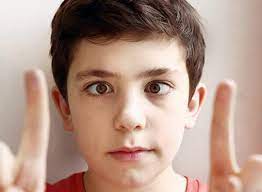PAEDIATRIC OPHTHALMOLOGY AND SQUINT
Refractive Error
Refractive errors are the commonest cause of preventive blindness in children.
Vision and refraction can be checked using many picture charts for preschool children and complete comprehensive eye examination can be performed.
Every child should have his first dilated eye check-up before 3 years.
The most common types of refractive errors are myopia, hyperopia, presbyopia, and astigmatism.
Symptoms:
• Blurred vision
• Holding the books too close to the eyes
• Child going too close to the TV
• Headache
• Eyestrain
• Double-vision
• Haziness
• Squinting
A child needs a comprehensive dilated eye examination by a Paediatric Ophthalmologist to find out the correct Power. Objective retinoscopy should be performed.
Treatment:
Spectacles are the simplest and safest way to correct refractive errors and provide your kid the optimal vision.
Contact Lenses can be prescribed when a child is responsible enough to take care of them and maintain proper hygiene. They are also prescribed in some medical conditions like keratoconus and aphakia to provide clearer and a wider field of vision.
Paediatric cataract surgery with IOL implantaion
Cataracts most commonly affect older adults, but some babies are born with cataracts ( Congenital Cataract) and Children can also develop them at a young age.These are known as childhood cataracts.
Symptoms
The child may not fix and follow light and objects
Lack of social smile or face recognition
Deviation of eye (squint) or shaking of eyeballs (Nystagmus)
Observing a white reflex in the eyes in photographs
Treatment
Sometimes Cataracts in children are not very dense or do not affect the visual axis and they require only close observation
But if cataracts are affecting your child's vision, they can slow down or stop their normal sight development. In these cases, we need to do surgery to remove the affected lens and implant an Intraocular lens.
Post-operative visual rehabilitation, Lazy eye therapy and regular follow up is necessary for good recovery.
It's particularly important to spot cataracts in children quickly because early diagnosis and treatment can reduce the risk of long-term vision problems.
Squint
Squint disorders can be treated with Exercises, Prisms and Surgery
The aim of treating a squint in order of importance is:
• To preserve or restore vision
• Straighten the eyes
• Restore 3D vision
In a child, the treatment of squint and any associated amblyopia should be started as soon as possible. The younger the age at which amblyopia is treated the better the chance of recovery of vision.
Amblyopia
Amblyopia is the medical term used when the vision in one of the eyes is reduced because the eye and the brain are not working together properly.
The eye itself looks normal, but it is not being used normally because the brain is favoring the other eye. This condition is also sometimes called amblyopia or lazy eye.
Unless it is successfully treated in early childhood, amblyopia usually persists into adulthood. It is also the most common cause of monocular (one eye) visual impairment among children.
Treatment:
Correcting the underlying cause like glasses for the refractive error, treatment for the Squint and Surgery for cataracts.
Patching: We have to force the child to use the eye with weaker vision by covering the good eye with a Patch. An adhesive patch is worn over the stronger eye for weeks to months. Patching stimulates vision in the weaker eye and helps parts of the brain involved in vision develop more completely.
